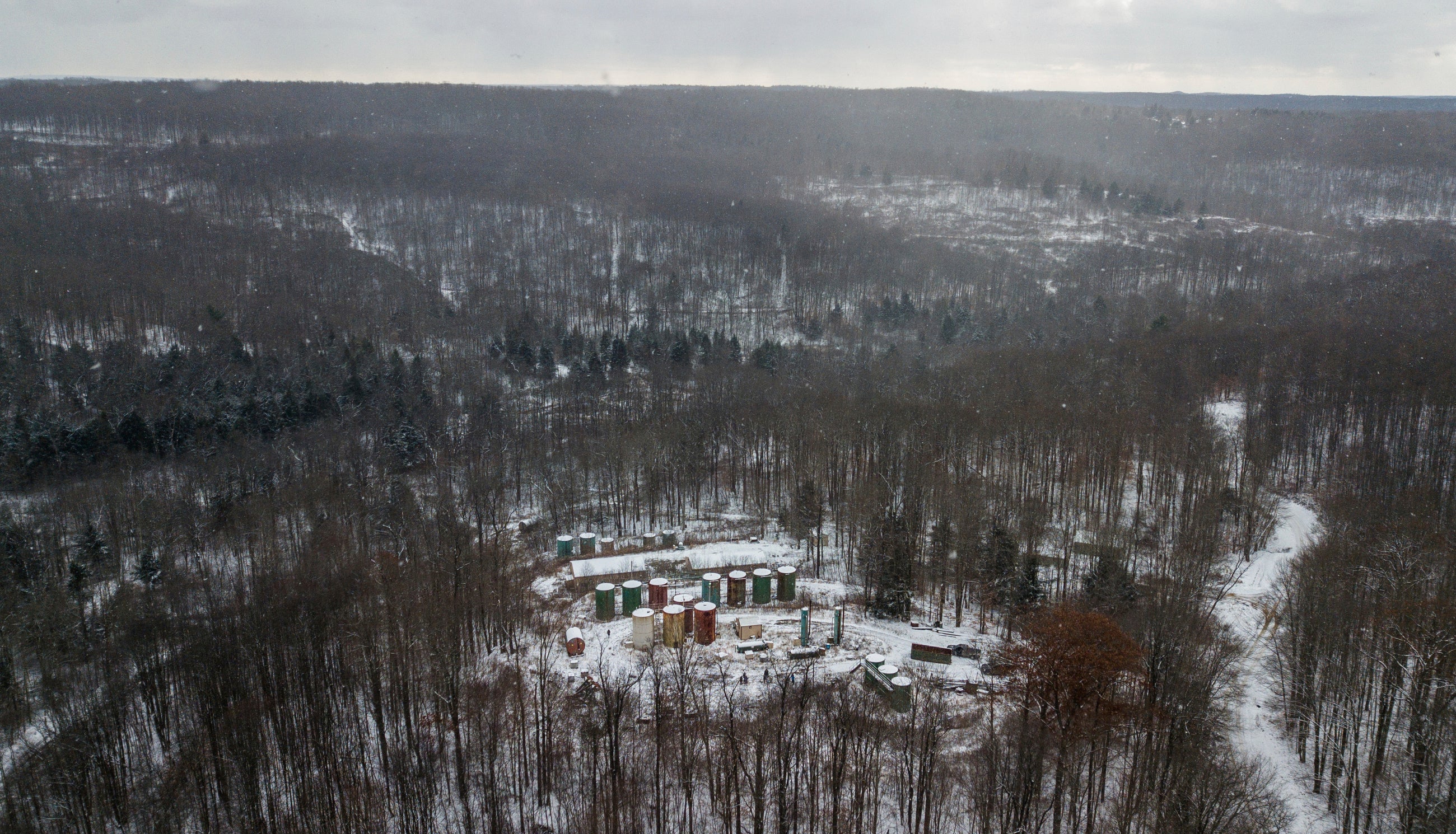Infrastructure plan: $33M to clean up hundreds of oil wells
The Biden administration says $33 million in infrastructure money will be used to clean up some 277 of an estimated 15,000 abandoned oil and gas wells on federal land

Your support helps us to tell the story
From reproductive rights to climate change to Big Tech, The Independent is on the ground when the story is developing. Whether it's investigating the financials of Elon Musk's pro-Trump PAC or producing our latest documentary, 'The A Word', which shines a light on the American women fighting for reproductive rights, we know how important it is to parse out the facts from the messaging.
At such a critical moment in US history, we need reporters on the ground. Your donation allows us to keep sending journalists to speak to both sides of the story.
The Independent is trusted by Americans across the entire political spectrum. And unlike many other quality news outlets, we choose not to lock Americans out of our reporting and analysis with paywalls. We believe quality journalism should be available to everyone, paid for by those who can afford it.
Your support makes all the difference.About $33 million of the $1 trillion bipartisan infrastructure plan recently signed into law by President Joe Biden will go toward cleanning up 277 of an estimated 15,000 abandoned oil and gas wells on federal land, the nation's interior secretary said Wednesday.
“Millions of Americans live within one mile of an abandoned oil or gas well,” Interior Secretary Deb Haaland said, adding during a news conference that the wells pose a danger to people, “particularly in communities of color and rural communities.”
“With tens of thousands of known orphaned wells across the country there is a significant amount of work to be done,” so the program will provide many jobs that pay well, Haaland said.
There are an estimated 15,000 abandoned wells on federal land — and states have indicated that they would need more than $8 billion to clean up 130,000 other orphaned wells, said Laura Daniel-Davis, principal deputy assistant secretary for land and minerals.
Those figures could be low — the Environmental Protection Agency has estimated the national total at 3.2 million.
Daniel-Davis said money to help “nail down” state inventories is included in $1.1 billion announced in January as available to states under the infrastructure law.
“This is the first installment” of $250 million provided through the infrastructure law for cleaning up orphaned wells and well sites on federal public lands, national parks, national wildlife refuges and national forests, Daniel-Davis said. The next will probably be announced during the fiscal year which starts Oct. 1, she said.
Including wells on federal land, the bill will provide $4.7 billion to clean up orphaned oil and gas wells, said Mitch Landrieu, Biden's infrastructure coordinator.
“States are now finally counting them,” he said.
Wells covered by Wednesday's announcement are considered high-priority because pollution threatens human health and safety, the climate and wildlife. Several wells, particularly in Pennsylvania and Louisiana, are “near disadvantaged groups,” Daniel-Davis said.
Some 163 wells are in Louisiana, in five wildlife refuges and the Jean Lafitte National Historic Park and Preserve's Barataria unit. Sixty-eight are in the Darbonne National Wildlife Refuge and 59 in the Upper Ouachita National Wildlife Refuge.
There are 24 each in Kentucky, in the Daniel Boone National Forest, and in Oklahoma, in the Deep Fork National Wildlife Refuge. Another 20 are in Texas, 18 in the Allegheny National Forest in Pennsylvania and 14 in Bureau of Land Management lands in Utah. In addition, the government will inventory and assess wells in the Glen Canyon National Recreation Area in Utah.
Ten wells are in California, three in the Cuyahoga Valley National Park in Ohio and one in the Gauley River National Recreation Area in West Virginia.
Contractors will measure methane before and after cleanup, Haaland said.
Louisiana has about 4,600 orphaned wells, defined in state law as those with owners that have either gone out of business or have ignored state clean-up orders, said Patrick Courreges, spokesman for the state Department of Natural Resources.
He said environmentalists often count those which have been plugged for at least five years as abandoned. As of last fall, he said, there were 9,352 such wells, owned by 447 companies.
Louisiana has been plugging 120 to 200 abandoned wells a year for the past five or six years, he said.
“It is our hope to at least double that" with money from the infrastructure bill, said Courreges.